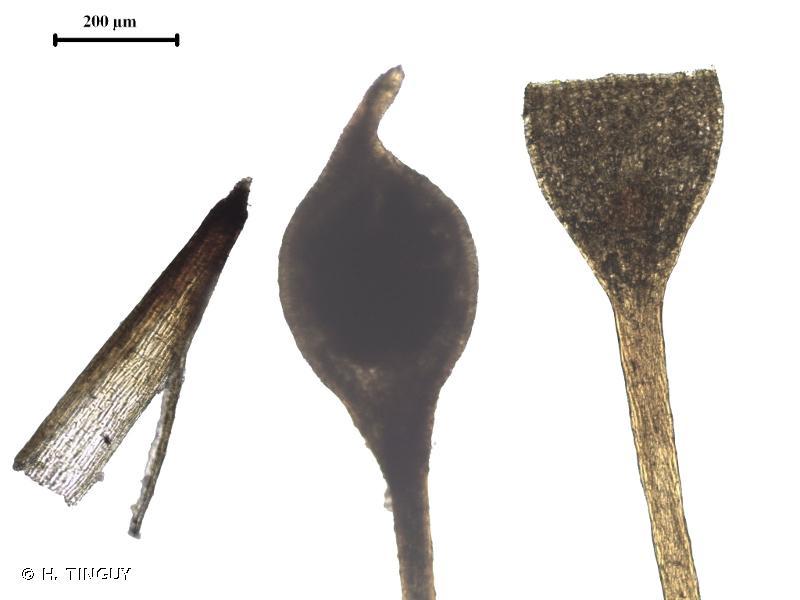
295709.jpg from: https://inpn.mnhn.fr/espece/cd_nom/5620
Introduction
The world of bryophytes, or mosses, is a fascinating one, filled with tiny, unassuming plants that often go unnoticed by the casual observer. Among these diminutive wonders is the Seligeria donniana (Sm.) Müll.Hal., a member of the Seligeriaceae family, commonly known as Seligeria. This moss may be small, but it plays a crucial role in the ecosystems it inhabits and has captured the interest of bryologists and nature enthusiasts alike.
Background
Before delving into the specifics of Seligeria donniana, it’s essential to understand the broader context of bryophytes. These non-vascular plants, which include mosses, liverworts, and hornworts, are among the oldest land plants on Earth, dating back over 400 million years. They are often overlooked due to their size, but their importance in the natural world cannot be overstated.
Main Content
Morphology and Identification
Seligeria donniana is a small, acrocarpous moss that forms dense, cushion-like tufts or mats. Its stems are typically less than 1 cm tall, and the leaves are narrow, lance-shaped, and often curved or twisted when dry. The sporophytes, or reproductive structures, are distinctive, with a long, slender seta (stalk) supporting a small, erect capsule.
One of the key identifying features of Seligeria donniana is the presence of a peristome

Seligeria-donniana-Cawdor-28.5.02_v1.5.02.jpg from: https://www.britishbryologicalsociety.org.uk/learning/species-finder/seligeria-donniana/
, a ring of teeth-like structures around the mouth of the capsule. This peristome is unique among mosses and helps distinguish Seligeria from other genera.
Global Distribution and Habitat
Seligeria donniana is widely distributed across Europe, North America, and parts of Asia. It is typically found growing on calcareous (limestone or chalk) substrates, such as rocks, walls, and soil in dry, open habitats like grasslands, cliffs, and quarries.
This moss is well-adapted to these environments, thriving in areas with high levels of sunlight and low moisture levels. Its ability to withstand desiccation and its preference for calcareous substrates make it a valuable indicator species for certain habitat types.
Ecological Roles and Adaptations
Despite its small size, Seligeria donniana plays an essential role in the ecosystems it inhabits. As a pioneer species, it helps stabilize and enrich soils, creating conditions suitable for other plants to establish themselves. Additionally, it provides a microhabitat for various invertebrates, contributing to the overall biodiversity of the area.
One of the remarkable adaptations of

Characteristic-features-of-Seligeria-donniana-Image-by-Serhat-URSAVAS-a-Plant-b.png from: https://www.researchgate.net/figure/Characteristic-features-of-Seligeria-donniana-Image-by-Serhat-URSAVAS-a-Plant-b_fig6_268502605
Seligeria donniana is its ability to survive in dry conditions. When moisture levels are low, the moss can enter a state of dormancy, reviving once water becomes available again. This resilience allows it to thrive in environments where other plants might struggle.

original.jpeg from: https://www.gbif.org/es/species/2670134
Case Study: Conservation Efforts
In some regions, Seligeria donniana is considered a species of conservation concern due to habitat loss and degradation. For example, in the United Kingdom, it is listed as a “Priority Species” under the UK Biodiversity Action Plan, highlighting the need for targeted conservation efforts.
One such effort is the restoration of calcareous grasslands, which provide suitable habitats for Seligeria donniana and other specialized plant species. By protecting and managing these areas, conservationists aim to ensure the long-term survival of this unique moss and the diverse ecosystems it supports.

largepreview.png from: https://www.researchgate.net/publication/268502787_Seligeria_donniana_Sm_Mull_Hal_Seligeriaceae_a_new_record_to_the_bryophyte_flora_of_Turkey
Technical Table

medium-34263.jpg from: https://plantdollar.com/plant/seligeria-donniana/
| Characteristic | Description |
|---|---|
| Phylum | Bryophyta |
| Class | Bryopsida |
| Order | Seligeriales |
| Family | Seligeriaceae |
| Genus | Seligeria
 Pterygoneurum-lamellatum-A-habitus-B-operculum-C-sporae-D-single-plant_Q320.jpg from: https://www.researchgate.net/figure/7-Seligeria-donniana-2-Plant-3-Leaf-4-Leaf-basal-margin-5-Cross-section-of_fig2_268502787 |
| Species | Seligeria donniana (Sm.) Müll.Hal. |
| Common Name | Seligeria |
| Growth Form | Acrocarpous, cushion-like tufts or mats |
| Leaf Shape | Narrow, lance-shaped, often curved or twisted when dry |
| Sporophyte | Long, slender seta supporting a small, erect capsule |
| Peristome | Present, distinctive ring of teeth-like structures |
| Habitat | Calcareous substrates, dry, open habitats |
| Distribution | Europe, North America, parts of Asia |
Conclusion
The Seligeria donniana (Sm.) Müll.Hal., or Seligeria, may be small in stature, but its impact on the natural world is significant. From its unique morphology and adaptations to its ecological roles and conservation efforts, this moss serves as a reminder of the incredible diversity and resilience found in the world of bryophytes. As we continue to explore and appreciate these often-overlooked plants, we may find ourselves asking: What other wonders lie hidden in the intricate tapestry of nature, waiting to be discovered and cherished?